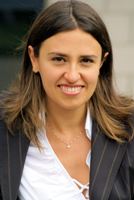Protection for Mothers Allows Women to Work
By regulating employment protection for mothers during parental leave (the optional period that follows maternity leave), legislators can influence the probability of mothers returning to work and how children are assisted. This is the thesis of Chiara Pronzato of the Dondena Centre for Research on Social Dynamics in Return to Work after Childbirth: Does parental leave matter in Europe?, a paper to be published in the Review of Economics of the Household.
 |
| Chiara Ponzato |
In particular, protection that is stretched out over time increases the possibility of returning to work, while shorter periods force mothers to make a definitive and premature choice, with a higher rate of leaving the workforce. Moreover, if the leave period is paid, the probability that the mother stays home for the entire first year of her baby's life increases, a situation that has positive effects on the reduction of the newborn death rate, the possibility of breastfeeding with subsequently better immunization and the development of the baby's cognitive abilities and his/her scholastic career. Pronzato analyzed the influx of regulations regarding parental leave on the probability of mothers returning to work by analyzing the data available for ten countries in the European Union: Italy, Greece, Spain, Portugal, France, Belgium, Austria, the United Kingdom, Denmark and Finland. Following a European directive that only fixed the minimum durations of maternity leave (14 weeks) and parental leave (3 months), each country applies different regulations, allowing for an evaluation of their effect on the probability of mothers returning to work. The first confirmation of the importance of national regulation on parental leave comes from the percentage of mothers who return to work after the initial maternity leave, which varies from 22% in Austria to 60% in Portugal. Parental leave in Austria lasts 18 months and is paid, while parental leave in Portugal lasts only three months, the first week of which is paid. The analysis demonstrates that mothers' education level is a relevant variable which drives mothers to return to work earlier. This is due to the fact that for higher levels of education, leave from work presents a higher cost to opportunities. The author indicates the importance of the availability of efficient services for child assistance and cultural factors like behavior towards working women. In addition, when family income is higher, mothers stay at home longer. The most important conclusions, however, are those that concern the greater probability of returning to work during longer periods of work protection and the greater probability of maternal care during the infant's first year when leave is paid. If legislators want to safeguard female participation in the workforce or guarantee better childhood development, says Pronzato, they now know what needs to be done. One common factor among all European countries is the low level of use of parental leave by fathers, who could also take advantage of leave from work. One last bit of advice to legislators is therefore to find incentives which would drive fathers to share leave with mothers, to allow for career breaks that don't only affect women.